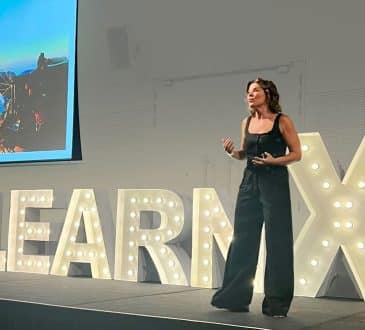The Curious Case of Digital Leadership in the Hollywood Age: How to Turn Role Models into Innovative Social Business Models

When my successful catering friend went from being a wedding planner to become a leadership party planner, I knew that time has to come rethink the whole meaning of leadership, time to separate the wheat from the shaft, corporate leadership from the leadership market. Over the years, leadership went from being a trinity concept (ethos, pathos & logos) to become a thriving multibillion dollar industry. Companies who used to dedicate a fraction of their earnings to Christmas parties and booze, must nowadays spend a little bit more on corporate bar mitzvahs, special effects, stellar animators, celebrity motivational speakers, Carnival Cruises, seriousless games and kinder garden kits from Toyz R Us, in addition to a full array of paraphernalia like recipe collections (leadership 2.0 for Dummies), after-hours workshops, personal development programs, boot camps, motivational tapes, TV channels, documentaries, and so many Disney-Like activities. To add to this frantic race for top ladder podiums, many galas are organized around the world to celebrate business elites.
Just like the Oscars and the Golden Globe Awards which are handed every year to stellar actors who portray Great Men and Women who could make us cry and by the same miracle lift the spirit of box office ticket masters, our business awards are one step away from the Hall of Fame Culture Club… While there is nothing wrong with celebrating business success, freedom movement heroes like Mandela, gay right advocates, courageous scientists like Beautiful Minds or musical achievements like Ray, innovative leaders like Steve, great companies like Facebook, etc., leadership in the digital age is not about fame or fortune or even about being a super human. It’s about a new breed of organizations and leading entrepreneurs who could never fit on one souvenir picture, story board or a selfie, as the story of the new wave is just beginning to unroll.
In this brief column, I seek to question the existing paradox between leadership in the digital culture and society and leadership thoughts as seen through vintage binoculars (leader versus manager dichotomy). My basic assumption is that the re-current public debates and iterative academic discussions over leadership in general; and LIDA (Leadership in the Digital Age) in particular are rather stale, obsolete and unproductive. Blame it on our linear thinking and obsession with traditional and classic frameworks we inherited from our popular academic ancestors such as Stodge, Wrapp, Lewin, Blake, Mouton, and many current leadership aficionados.
When Professor John Keaton (Robin Willams) said “we must constantly look at things in a different way’’, he actually meant that we should think forward, not backward. But to change and self-challenge the way we wish to grasp, capture or encapsulate a full range of digital behaviors, social economic avatars, crowd-oriented manifestations under one same old Red Roof, we must start from scratch. Henceforth, we consider the debate over numeric skus going from 1.0 to 4.0 as completely inadequate and incompatible with respect to the quantum leaps and disruptive changes we have seen in less than two decades. And this is just the melting point of a long lasting iceberg. So where do we go from here to understand our clouded lives and digitized climates?
Well, in the absence of a certainty about what digital leadership stands for or which framework is most likely adequate to portray the chameleon nature of this phenomenon, it becomes obvious that all hypotheses are sensibly equal. So let’s start from scratch to avoid being dragged -one way or another- by mainstream tides. We will start with the Zero Razor Hypothesis.
As stated in the Ockham principle, if the subject is too complex or too controversial to curb the intellectual divide among competing hypotheses, the one with the least assumptions should prevail.
So why do we need to build a new model or framework for leadership in the digital era –a new age where creative minds of the new wave are breaking the barriers between what is real and what is virtually real. Innovations in the ICT world have turned mid-century tipping points into a daily show. People from around the world gather behind their multiple screens to watch ideas emanating like fireworks at every click-second let alone attending innovation shows such as the CES where digital geeks and social innovation entrepreneurs exhibit year after year their mesmerizing discoveries. Suddenly, each ICT user is capable of creating breathtaking 3 D products in the comfort of their homes, mind-blowing applications that outsmart anything Magic Shows in Vegas or Cirque du Soleil could offer to their dwindling audiences. Have we cracked the Da Vinci Code or Pandora’s Box! So it seems as we can’t seem to find a holistic or a mnemonic word to describe the mutational and dazzling world of social innovation and entrepreneurial leadership.
So where do we categorize these newly coined and Beautiful Concubines such as eLeader/ iLeader/ Virtual Leader/ dLeader/ mLeader, which tend to proliferate and echo each other in various vade mecums, but who fraught with confusion as they fail to uplift us from the vicious circles of the past era. Whether we replace the attached prefixes or suffixes, left or right of the same idea, the digital upgrade will not make senior level managers perform better than Siri or a cross-gender robot like Dina 48 (Martine Rothblatt`s ex/new cyber-wife). In other words drowning by numbers won’t take us far beyond .99. as anything above this inflated milestone will simply offence Wayne Gretzky and undermine the role of the digital evolution of mankind.
While most of us agree that we live in a tech-knowledgy-based-society, we are still having trouble imagining organizations without commanders or leadership without a picture ID. Mainstream thinking about leadership will not prevent leadership shortages or over stock to happen. As matter of fact, if we follow the steps of Karl Popper, we might actually realize that self-refutation is a good critical thinking exercise:
In the absence of sufficient or sophisticated 3D printers which could help us create enough digital L-Replicas capable of making the world a better place, we must think of a different alternative and pathways to curb down the global shortage of leaders. In this area, one thing is sure: supply will never meet the pent up demand for good crops.
In fact, while we all seem to agree that the information society has gone through so many tipping points and drastic changes over the last three decades, we are still hooked on the synonymous link between leadership and human traits hence the acting perspective and our obsession with Icons and iDol(l)s and role models. While no one undermines the positive effect of method acting studios or techniques adapted to suit the needs of aspiring managers and senior executives willing to improve their stage presence, verbal or non-verbal skills, LIDA (Leadership in the Digital Age) stands on a whole new foundation and perimeter. Here is our top 15 commandments, tips and tipping points to look for in the near future:
Commandment No 1-Unlike natural or human centered leadership, LIDA is a community-centered ideology shared by P2P (Peer-to-Peer) citizens from around the world. Once the trigger or the signal goes online, any entity willing to participate, act as proxy or a new gateway to voice or express its opinion regarding a social, economic, human, environmental or consumer issue or idea through media channels becomes an agent-based-transmitter;
Commandment No 2-Leadership in the digital age is not something carved in the stone or supposed to last forever like memorial icons of the past. In few years from now, very few people will ever revere or relate to Frederick Taylor, Henry Ford, Lee Iaccoca, Ted Turner, Ross Perot or Jack Welch except in introductory courses to management history and anthropology. It`s a non-linear and complex adaptive system where the only thing constant is change. Hip products, hot topics, trends, and newsworthy people are all subject to the laws of Fashion Fahrenheit Index or obsolescence as Schumpeter would have said;
Commandment No 3-Unlike previous organizational models inherited from the Napoleon era and military system, modern organization are flat. Unfortunately many top executives claiming the lateralization are still using private elevators to get to the panoramic offices, private planes to get to the Bahamas and limousines to go to charity events;
Commandment No 4– Actually, in the growing realm of consumer culture, leadership is neither managerial, X, Y or L, it is about being a role model in social responsibility and a pioneer in value creation. Crowd-sourcing and pleasing companies are the ones who build sustainable business models, create job opportunities without discrimination, offer quality services, listen to their customers, personnel, and communities be it offline or online, onsite or offsite the factory;
Commandment No 5-Leadership in the digital age implies being a pioneer in renewable energies, collaborative economies, community-oriented, crowd-sensitive. The new rugs-to-riches entrepreneurs and kick starters are less and less dependent on Wall Street to raise money. This cultural factor alone plays an enormous part in bridging the semantic distance between the previous notion of leadership and the current perception of entrepreneurial leadership. Modern success stories are becoming the new bibles for so many talents and school dropouts who dream about social mobility;
Commandment No 6-From a managerial perspective, modern companies are no longer seen as vertical structures with cubicles like aquariums but mostly as complex adaptive and learning systems where every team member and collaborator is a dynamic agent of change and prosperity. In this bio-lateral view of business, Neo-Darwinian organizations are very much like Lucy, the smarter she gets, the more she is able to listen to the surrounding heartbeats. Call it 3D Leadership;
Commandment No 7-Omni-channel leadership, if I may use the term, is a 360° degrees, 24/7 Attitude. So practice what you preach as there are 6 degrees of separation between you and your next customer or competitor;
Commandment No 8-From the branding viewpoint, leadership is a cluster of meaning making signs, symbols, stories and ethical principles shared by the enterprise, entrepreneur and its ecosystem. Call it a triple EEE rating;
Commandment No9– Not only leadership has been democratized within 2.0 enterprises, it went from highbrow management to a lowbrow daily routine as the leader-follower relationship left the building along with central planning. In fact, it became a source of empowerment. Information sharing, decentralizing decision-making processes are a key-component of modern companies who go far beyond lean management to implement omni-channel way of thinking in their daily practices. The supply chain is no longer reserved to UPS, Fedex or Western Union, every nod is a link in the cyber-human flow;
Commandment No 10-Unlike our usual apprehension towards paradoxical principles, the new business platform is built around self-dilution in favor of social distribution. When role models turn personal qualities and values into dynamic social business models or systems, the payoff is huge. That’s what many companies do in the hospitality sector. By applying Servant-leadership principles to customer satisfaction, restaurant managers, hotel chains have become the biggest recyclers of these cross-cultural values. Call it the ultimate VIP services;
Commandment No 11- Leadership without a Leader. This category includes music orchestras who few manage to compose the most complicated symphonies of Rashmaninov without ever being supervised by a conductor: those who learned to play Mozart without Carlo Mutti and Beethoven without Beethoven. In other words, all organizations built on Peer-to-Peer relations. Whoever/whatever (male, female, iOs, Mapquest, iDog, heart monitor, virtual assistant to autistic kids, Moodle, Google Translate, Wikipedia, Orange Lab, Bikesharing, etc.) can make the difference in people’s lives deserves an Oscar, is an eligible member of this category. This new emerging category includes the bee queen, she doesn’t have to reign or run the show but to lay healthy eggs;
Commandment No 12-Furthermore, what’s important nowadays is not Captain Philips, nor the first initiator of the Arab Spring who set himself on fire, or even the first person who wrote je suis Charlie, it is the leadership content that matters- that kind of broadband message, steady story and representation which will surf through various social networks and which will keep on bouncing from one user to many like a virus; and from one language to another vernacular like. ‘’Open Source Leadership’’ (if I may coin or use this expression) is actually similar to OSi (Open Source iDeologies) which tend to become viral. Whether LIDA could be used for good deeds, self-serving goals like presidential hopefuls, mercantile pitches or any Machiavellian purposes like ISIL propagandists, that is another story. Once again, Marshall McLuhan’s prophetic statement still works in the digital era;
If the web was a turning point and a tipping point in our gradual transformation bionic-friendly creatures, the social networks and media channels are the new veins and umbilical cords which will keep on connecting cosmopolites. They are # citizens of cyberia who are one day Charlies Angels (without ever been to Paris) and who will very unlikely take the plane to rescue the abducted Muslim girls in Nigeria or risk their lives to fight back Boko Haram terrorists.
Commandment No 13-Entrepreneurial leadership in the digital age has nothing to do with mastering the craft of social network communication or vernacular, it is a social economic business model used by many successful organizations who knew how to turn complex adaptive social systems into multi-billion dollar empires. Google knows how to hit two birds with one stone -bridging, on one hand, it is helping large community coping with digital illiteracy through user friendly applications, and on the other hand, it is driving more traffic towards its boundless galaxy of pages;
Commandment No 14- What about Social innovation? “Social Insemination“ is probably the most genuine, generous and hybrid model ever used by leading firms, entrepreneurs and digital advocates as a source of revenue and a source of influence. In fact, the future of leadership lays in the hands of collaborative-community-centered entrepreneurs who are poised to becoming the legitimate spokespersons of modern leadership. In fact, social innovators are to leadership what Erasmus was to the dark ages in Europe. The new wave is just as influent as the humanist movement during the Renaissance. Current discoveries and progress in brain-to-brain, mind-to-mind computer assisted communications, neuro-modulations are one step ahead of the Enlightenment Age which took the world by a storm…Are we there yet? I am not sure about the final answer, all I can say is that multiple or simultaneous tipping points within the same age are more likely to happen within shorter time frames as the lifecycle of everything is becoming shorter and shorter by nano seconds;
In the upshot, leadership in the digital age is not about mastering the art of communication through digital or social media channels, as much as it is about leveraging, mutualizing technology infrastructures, resources to improve, change or share knowledge with collaborative-minded communities. Sustainable companies who manage to reallocate their resources to their communities and convert leadership traits into core value propositions will rip recurrent benefits and most likely respect and loyalty from the mobile crowds. Wikipedia did manage to gain more visitors in few years than several century old encyclopedias (Encyclopedia Britannica), so did many jump starters who went from small time crowd-funding seekers to becoming Angel Investors to many start kick starters. All we need to do is quit thinking constantly about leadership as a this personal asset or a management style and a little bit more as a chain-value to be shared by all the collaborators, stakeholders and consumers.
Wave after wave, the new breed of social entrepreneurs are changing almost everything that come across their way. Open Source culture, ideology and practices will most likely continue to drive peer-to-peer relations and collaborative economies towards new territories. What we have seen up till now is only the beginning of a new social business order and system; The Age of Learderless Inc.
Last but not least, let us remember that it takes a whole neighborhood to raise a child…
**********
By Jamal Boukouray, PhD
Sr Professor & Management Consultant
Core Specialties include Management of Innovation, Complexity, Organizational Management & Leadership
ESCA Ecole de Management, Casablanca.
Add CEOWORLD magazine to your Google News feed.
Follow CEOWORLD magazine headlines on: Google News, LinkedIn, Twitter, and Facebook.
This report/news/ranking/statistics has been prepared only for general guidance on matters of interest and does not constitute professional advice. You should not act upon the information contained in this publication without obtaining specific professional advice. No representation or warranty (express or implied) is given as to the accuracy or completeness of the information contained in this publication, and, to the extent permitted by law, CEOWORLD magazine does not accept or assume any liability, responsibility or duty of care for any consequences of you or anyone else acting, or refraining to act, in reliance on the information contained in this publication or for any decision based on it.
Copyright 2024 The CEOWORLD magazine. All rights reserved. This material (and any extract from it) must not be copied, redistributed or placed on any website, without CEOWORLD magazine' prior written consent. For media queries, please contact: info@ceoworld.biz
SUBSCRIBE NEWSLETTER









